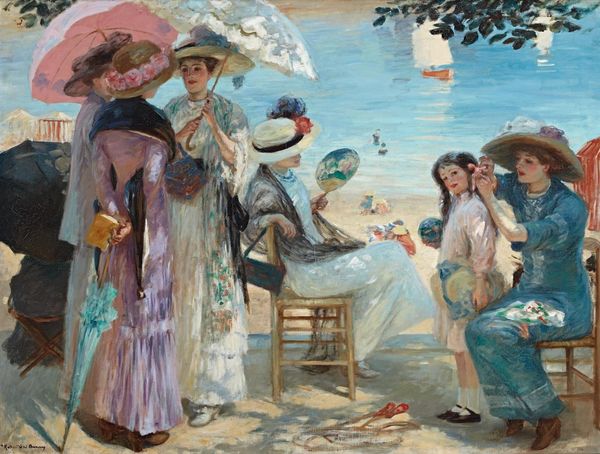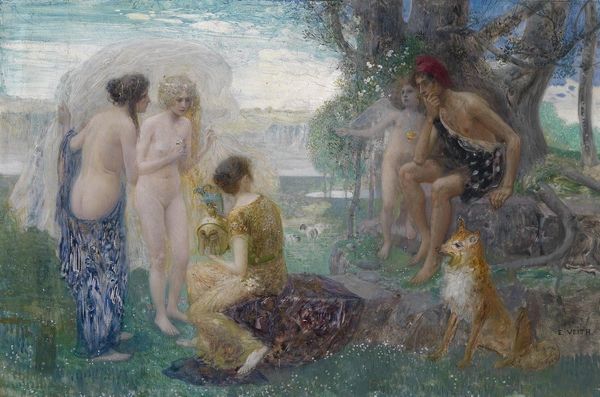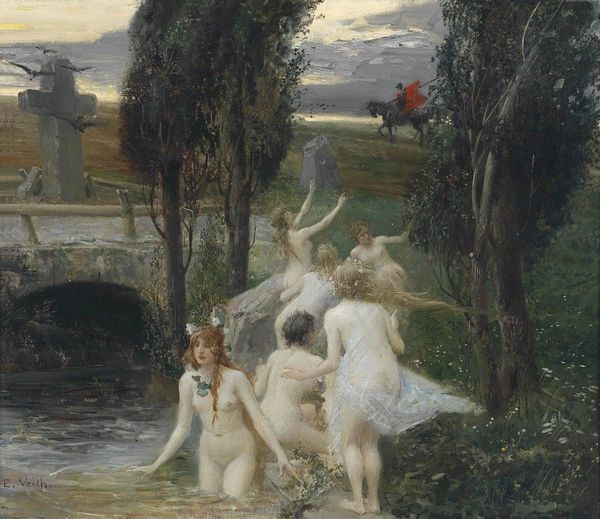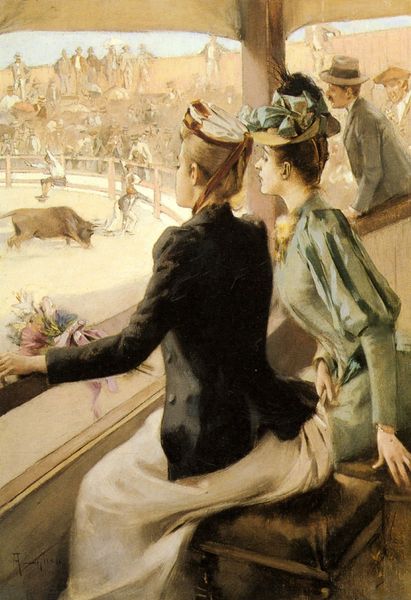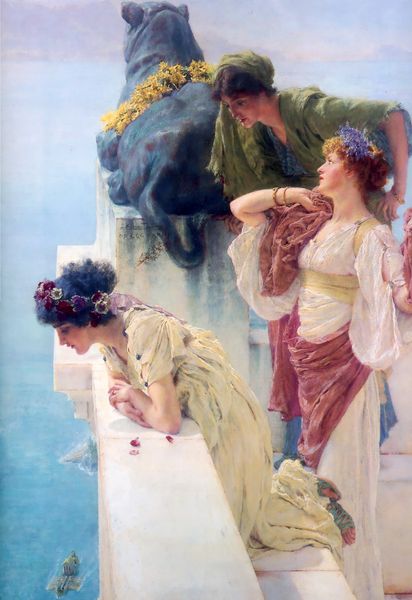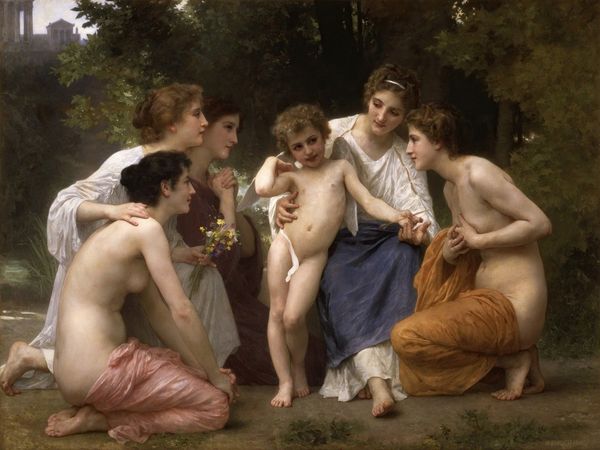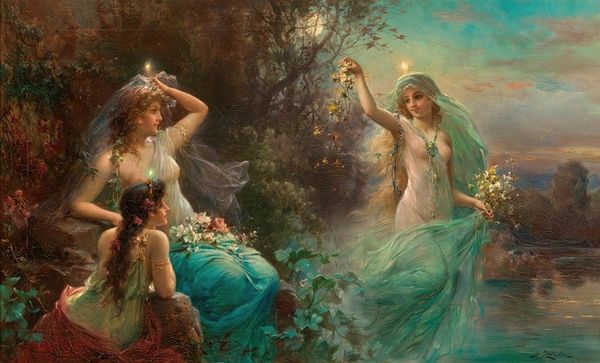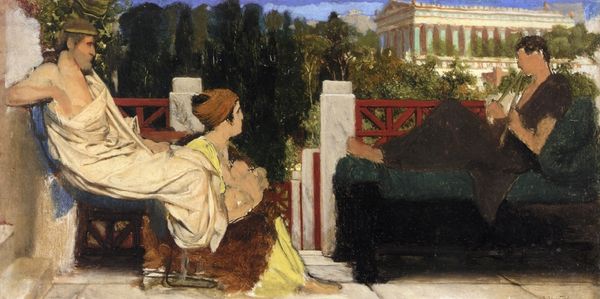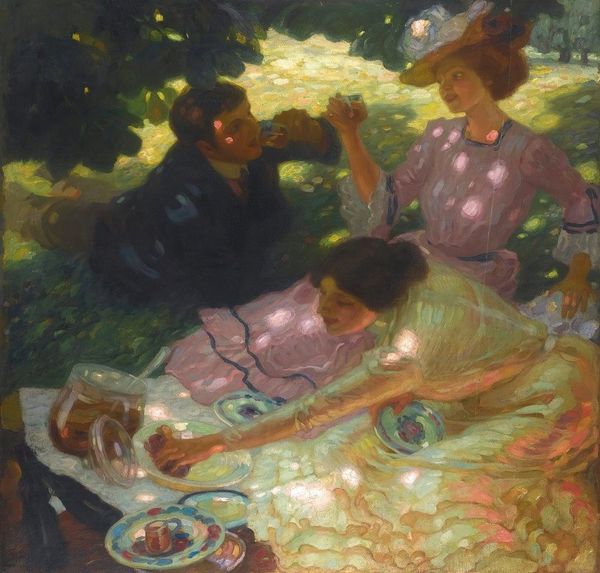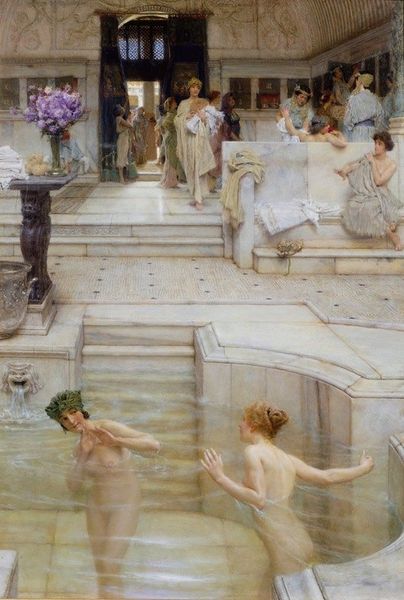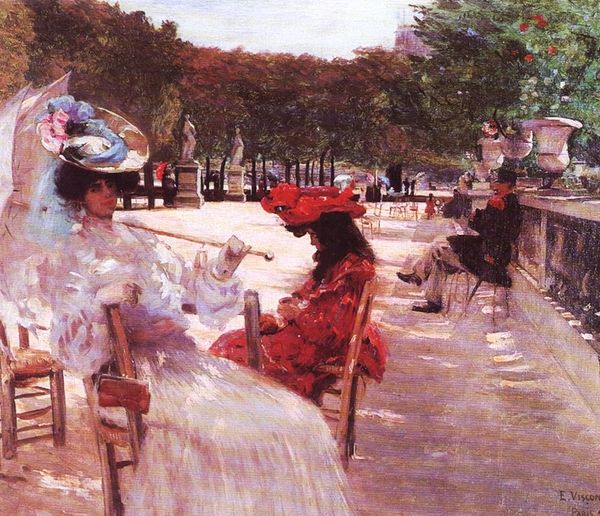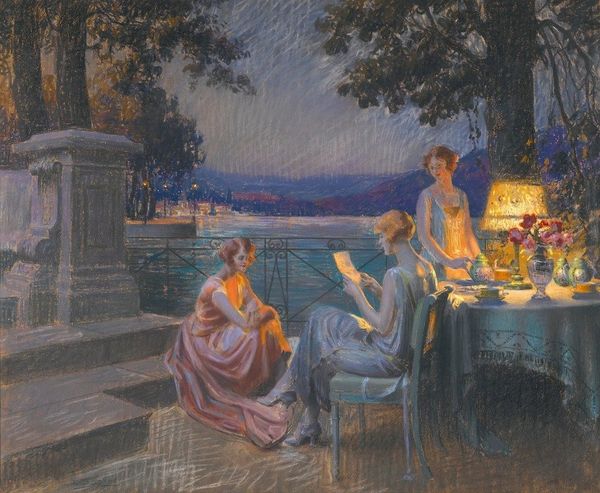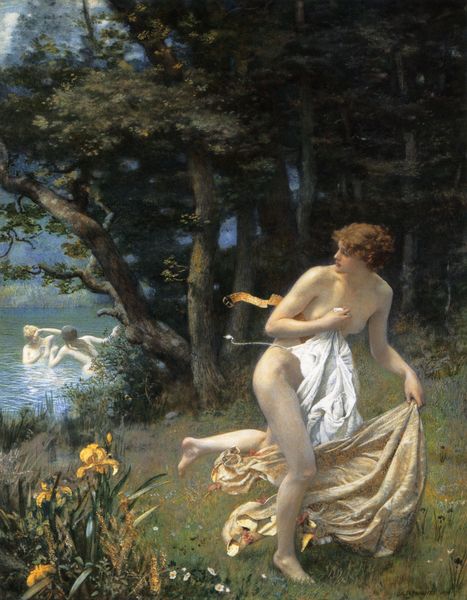
painting, oil-paint
#
portrait
#
gouache
#
painting
#
oil-paint
#
figuration
#
romanesque
#
oil painting
#
genre-painting
#
history-painting
#
academic-art
#
realism
Dimensions: 95.3 x 152.3 cm
Copyright: Public domain
Curator: Lawrence Alma-Tadema's "The Baths of Caracalla," painted in 1899, presents a fascinating depiction of Roman life. What are your initial thoughts on it? Editor: The overwhelming sense is one of leisure, but there's an underlying current of—I don't know—oppression? The casualness of the bathers juxtaposed with what looks like real distress on the face of that central woman creates tension. Curator: It's intriguing you see oppression. I'm drawn to the details of the marble, the precise rendering of the water's surface, and how those materials evoke a sense of Roman opulence and technological advancement. Consider the industrial processes required to quarry, transport, and refine those materials. The labour involved… Editor: Absolutely, and that labour, both visible and invisible, directly links to that "opulence." Who built these baths? Whose exploitation afforded this luxury? The women here are, after all, positioned within a highly structured, patriarchal society. Even their leisure is controlled, isn't it? Notice how the architecture confines them to this narrative, how the composition stages them within a spectacle of class. Curator: That's a valid point. Though, Tadema was known for his meticulous research and accuracy, and much of his work focuses on an imagined view. There’s an almost archaeological focus in the representation here. He would compile photographs of different architectural details, source authentic fabrics… it all informs the materiality we see. Editor: And I would argue that materiality reinforces the illusion. His aestheticization sanitizes the real social dynamics. Even the architectural realism contributes to a romanticized vision, ignoring the everyday brutality that supported it. Whose stories are silenced for this picturesque moment? Curator: Interesting. I find the materiality empowering as an indication of Roman ingenuity, and technological mastery. The labour shows they could produce at mass quantities Editor: Perhaps, and the depiction of such is worth questioning still. This moment that we’re invited into is rife with implied narratives beyond mere luxurious enjoyment. Curator: A worthy consideration. Tadema's work clearly prompts layered discussion. Editor: Precisely. It encourages us to consider how history is constructed through material culture and the stories that often go untold.
Comments
No comments
Be the first to comment and join the conversation on the ultimate creative platform.

